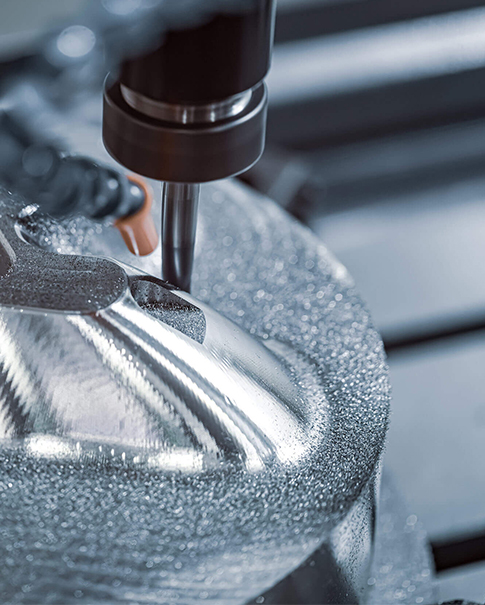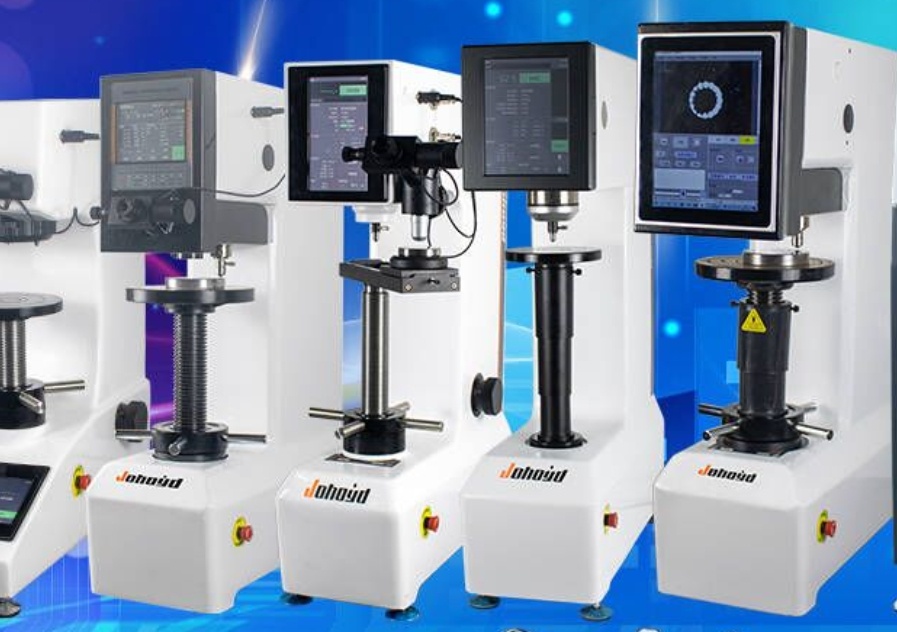
 1. Quenched and tempered steel
1. Quenched and tempered steel
The hardness test of quenched and tempered steel mainly uses Rockwell hardness tester HRC scale. If the material is thin and HRC scale is not suitable, HRA scale can be used instead. If the material is thinner, surface Rockwell hardness scales HR15N, HR30N, or HR45N can be used.
2. Surface hardened steel
In industrial production, sometimes the core of the workpiece is required to have good toughness, while the surface is also required to have high hardness and wear resistance. In this case, high-frequency quenching, chemical carburization, nitriding, carbonitriding and other processes are used to carry out surface hardening treatment on the workpiece. The thickness of the surface hardening layer is generally between a few millimeters and a few millimeters. For materials with thicker surface hardening layers, HRC scales can be used to test their hardness. For medium thickness surface hardening steels, HRD or HRA scales can be used. For thin surface hardening layers, surface Rockwell hardness scales HR15N, HR30N, and HR45N should be used. For thinner surface hardened layers, a micro Vickers hardness tester or an ultrasonic hardness tester should be used.
3. Annealed steel, normalized steel, mild steel
Many steel materials are produced in an annealed or normalized state, and some cold rolled steel plates are also graded according to different degrees of annealing. The hardness testing of various annealed steels usually uses HRB scales, and sometimes HRF scales are also used for softer and thinner plates. For thin plates, Rockwell hardness testers HR15T, HR30T, and HR45T scales should be used.
4. Stainless steel
Stainless steel materials are usually supplied in states such as annealing, quenching, tempering, and solid solution. National standards specify the corresponding upper and lower hardness values, and hardness testing usually uses Rockwell hardness tester HRC or HRB scales. The HRB scale shall be used for austenitic and ferritic stainless steel, the HRC scale of Rockwell hardness tester shall be used for martensite and precipitation hardening stainless steel, and the HRN scale or HRT scale of Rockwell hardness tester shall be used for stainless steel thin-walled tubes and sheet materials with thickness less than 1~2mm.
5. Forged steel
The Brinell hardness hardness test is usually used for forged steel, because the microstructure of forged steel is not uniform enough, and the Brinell hardness test indentation is large. Therefore, the Brinell hardness test can reflect the comprehensive results of the microstructure and properties of all parts of the material.
6. Cast iron
Cast iron materials are often characterized by uneven structure and coarse grains, so Brinell hardness hardness test is generally adopted. The Rockwell hardness tester can be used for hardness testing of some cast iron workpieces. Where there is not enough area on the small section of the fine grain casting for Brinell hardness hardness test, the HRB or HRC scale can often be used to test the hardness, but it is better to use the HRE or HRK scale, because the HRE and HRK scales use 3.175mm diameter steel balls, which can obtain better average readings than 1.588mm diameter steel balls.
Hard malleable cast iron materials usually use a Rockwell hardness tester HRC. If the material is uneven, multiple data can be measured and the average value taken.
7. Sintered carbide (hard alloy)
The hardness testing of hard alloy materials usually only uses the Rockwell hardness tester HRA scale.